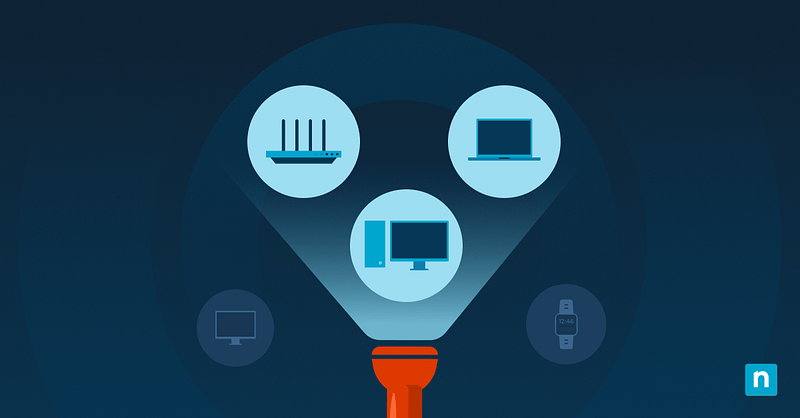Key Points
- Shadow IT Definition & Risks – Shadow IT is the use of unauthorized devices, apps, and cloud services outside IT control, creating serious risks of data breaches, compliance violations, and insider threats.
- Why Employees Use Shadow IT – Workers turn to shadow IT due to inefficient approved tools, long approval processes, productivity demands, and lack of security awareness, especially in hybrid and remote work setups.
- Common Shadow IT Practices – Examples include downloading unapproved software, sharing login credentials, using personal devices, storing files in unauthorized cloud platforms, and using non-approved communication tools.
- Impacts on Organizations – Shadow IT increases cybersecurity vulnerabilities, financial losses, data loss, and regulatory non-compliance, while complicating IT support and version control.
- Managing Shadow IT – Detection involves monitoring for unauthorized apps, unusual network activity, and device use, while solutions include employee training, clear IT policies, and endpoint management platforms like NinjaOne that enforce security and provide user-friendly approved tools.
By its very nature, shadow IT is often unseen by IT security teams. This oversight routinely risks organizations violating data privacy laws, distorting IT budgets, and being exposed to nefarious actors. In a remote work environment, shadow IT poses a new threat that must be actively managed.
→ Download your free Shadow IT Report [PDF]
What is shadow IT?
Shadow IT is the practice of using information technology systems that an organization’s IT department does not manage. This can be anything from using an unsanctioned personal device to downloading software or applications that the IT department does not approve.
Understanding shadow IT behaviors
The rise of unconventional work setups that have become normalized in recent years has created many challenges for businesses and organizations.
One is ensuring the protection of company data from breaches and unauthorized access. Providing sanctioned devices can establish a baseline level of control.
However, some hurdles still exacerbate the risks associated with shadow IT. These hurdles encompass IT behaviors displayed by employees themselves that contribute to the risks brought by shadow IT.
Examples of shadow IT practices
For a better overview of shadow IT, here are some common shadow IT examples:
- Downloading unapproved software. While it may seem harmless to download and install software and applications from an official software distributor, this doesn’t mean that it’s completely secure. Some software will ask users to grant permission to access sensitive data, system resources, network connections, etc. One wrong click granting these permissions can lead to data breaches, compliance violations, or even malware infections.
- Sharing login credentials. Another practice with a clear security breach risk is sharing login credentials. Usernames and passwords are not supposed to be shared with anyone else. Doing this can easily compromise the security of the user’s accounts and open the door to potential misuse.
- Using personal devices for work. More and more companies have started providing employees with work-exclusive devices. However, some employees still use their personal devices despite the potential risk of exposing company data to malware or compromising personal data through work applications.
- Using unauthorized cloud storage services. Employees are tempted to use cloud storage services that they can easily access. This unauthorized cloud storage poses a significant security risk and may even cause the loss of critical company data, leading to operational disruptions, reputational damage, and significant financial penalties.
- Utilizing unauthorized communication tools. Sharing confidential information through communication tools not approved by your organization may cause serious breaches of security protocols and compromise sensitive data.
Factors leading to shadow IT adoption
Despite the risks, users adopt shadow IT practices for several reasons:
One is the perceived inefficiency or inadequacy of approved tools provided by the organization. This results in users looking for alternative IT systems to ease their workflow. Another one is the lengthy process of acquiring official IT solutions, which drives users to opt for unauthorized tools for quicker access to necessary functionalities.
In some cases, productivity also drives users to use unsanctioned IT systems. Some may find themselves more productive when using their personal devices that they’re already used to navigating. Others may utilize software that offers specific features or functionalities lacking in approved software, potentially leading to increased efficiency and productivity gains.
Lastly, the users’ lack of awareness about security risks associated with shadow IT can lead to further adoption of shadow IT practices. Without proper knowledge about the implications of shadow IT behavior, they may unknowingly expose sensitive company data.
The negative implications of shadow IT usage
Since we’ve uncovered motivations for shadow IT adoption, it’s crucial to delve into the dangers it may cause an organization. As we’ve mentioned, shadow IT practices pose risks of information breach and data loss. A recent study by Entrust revealed that 77% of IT professionals are concerned about shadow IT becoming a significant issue in 2023. It’s an inevitable consequence of the emergence of remote work and hybrid employment setup.
Shadow IT can also expose IT infrastructures to apparent vulnerabilities. Unauthorized software and devices typically lack security patches and updates implemented by companies, creating potential entry points for malware and cyberattacks that can compromise the entire network, leading to widespread disruptions, data, and financial losses.
The pros and cons of shadow IT usage
It’s easy to avoid shadow IT practices if they only have negative consequences. However, shadow IT can offer some user-end benefits alongside its significant risks.
Pros:
- Employee satisfaction. Utilizing unauthorized tools that may aid in expediting workflow can ease an employee’s burdens.
- Increased productivity. When users are satisfied with the unsanctioned IT system efficiency and productivity gains can increase.
- Innovation introduction. Using unapproved IT systems may lead to the discovery of more innovative tools and efficient ways of completing tasks.
- Flexibility and adaptability. Shadow IT allows users to utilize tools they are familiar with and comfortable using. This reduces a steep learning curve and can increase efficiency.
- Collaboration. Shadow IT practices involving unauthorized communication channels may promote a more efficient user collaboration.
- Personalization. Shadow IT tools may offer more personalization than standardized, one-size-fits-all solutions provided by the IT department.
Cons:
- Exposure to vulnerabilities. Shadow IT tools are easy targets for cyberattacks because they often lack security features and protocols implemented by an organization’s IT team.
- Non-compliance with regulations. Shadow IT tools also frequently lack the essential safeguards to ensure compliance with industry regulations, putting the organization at significant risk.
- Support hurdles. Sanctioned IT systems are in place to resolve any issues that may arise immediately. Shadow IT tools may not have complete dedicated support infrastructure, which can hinder the resolution of technical issues.
- Data loss. Shadow IT tools increase the risk of sensitive data loss due to the lack of data protection measures often found in unauthorized tools.
- Financial losses. Data breaches caused by shadow IT tools can lead to revenue loss from regulatory fines, incident response costs, operational downtime, etc.
- Version control issues. Multiple versions of unauthorized software across an organization can create compatibility problems and hinder collaboration.
What we do in the shadows: The dangers of hidden IT behavior
To better understand the shadow IT behaviors of employees working remotely due to COVID-19, NinjaOne surveyed 400 remote workers in the UK across multiple industries. We learned that while most respondents were indeed aware of their organization’s security policies, employees will often skirt the rules, using an array of physical devices like hard drives and smartphones and digital tools like communication and business software.
Recommendations based on the survey results suggest that frequent security training combined with clear policies and frictionless IT experiences can reduce or eliminate some of the reasons employees turn to shadow devices and applications.
In the remote work era, complete management of devices interacting with company data should be in place. It’s the job of leadership to understand the needs and obstacles of their team and set the tone and policies regarding basic security hygiene.
Download our full report to learn more about how shadow IT is impacting the organization and how to turn these security gaps into opportunities.
Managing shadow IT behavior
With the emergence of hybrid and remote work setups, some employees find IT shadow tools beneficial. However, the benefits of these unauthorized IT systems are frequently short-term. While it can be challenging for organizations to fully eradicate shadow IT practices, there are ways to manage and mitigate risks. An endpoint management system like NinjaOne can be a perfect ally in this endeavor.
NinjaOne empowers IT teams to manage and mitigate shadow IT behavior. Its features grant real-time visibility over your network, automate tasks, and enforce security policies while providing user-friendly access to approved IT solutions, ultimately boosting security and employee satisfaction. This fosters a secure and productive work environment that empowers employees while safeguarding critical data and assets.
Get a clearer view of your IT environment to manage your assets better with NinjaOne’s IT Asset Management Software
Get a free trial or watch a demo here








